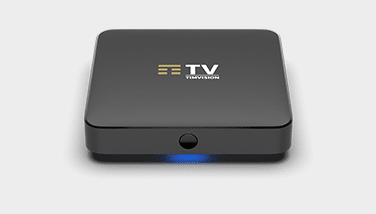Tailored advertising to connected home audiences emerges as a powerful strategy for monetization in the pay TV provider community.
New technologies and regulations are revealing huge opportunities for network service providers (NSP) to enhance user engagement and introduce additional revenue streams from an unlikely source: programmatic advertising delivered via open and intelligent customer premises equipment (CPE). As the industry continues to experience a contraction in average revenue per user (ARPU), leaders in the industry have been looking for new ways to increase revenues and expand margins.
To learn more about how programmatic advertising strategies are evolving in the NSP community and the impact it will have on the margins of pay tv providers, we caught up with Christian Lefebvre, Senior Vice President of Global CPE Video at Technicolor Connected Home, known as Vantiva, and Cyril Daoud, CEO of Hoppr.
Here is what they had to say:
Q: First of all, thank you both for taking the time to chat. Christian, let’s start with you. Can you tell us the role programmatic advertising is playing in the NSP community?
Christian Lefebvre: The global advertising market is huge. It is around $160 billion in revenue per year. Network service providers have increasing costs in operating the network, so they need to find areas of revenue growth. It is for this reason that targeted programmatic advertising is emerging as an interesting — and profitable — option in the monetization strategies of pay TV operators.
Cyril Daoud: Pay TV operators traditionally come from the world of cable and satellite where they have primarily focused on monetizing triple play offerings (phone, video and broadband). As networking, CPE and technologies evolve, pay TV operators have an opportunity to secure a position in the advertising sector. It is an opportunity that may not be immediately obvious to this industry. But it is a very real opportunity and it is growing.
That is why we are seeing growing interest, with industry leaders taking the time to learn how to understand and embrace programmatic advertising as a monetization strategy. Pay TV operators have a unique relationship with subscribers and the content that they receive. That is a very interesting position in which to be, and it is a dynamic that brands and advertising agencies are beginning to notice.
Q: The industry went through a painful cord-cutting season where many NSPs lost a major stream of revenue as consumers elected to seek direct web-based access to content. Does programmatic advertising represent an opportunity to recapture revenue that may have been lost through that process?
Cyril Daoud: Definitely. Advertising will be the next big thing in bringing back profitability for video providers. We are already seeing the trend happening pretty much around the world. But in order to harness the potential and increase revenue streams, we need to understand the nature of digital programmatic advertising and the way end users interact with this content.
It is the next step in what has been a steady evolution. When advertising was first introduced it seemed to be an important part of the content experience. People enjoyed watching ads and were not annoyed by the interruptions to programming. As a young kid, I remember looking forward to advertising and even remember some of the jingles to this day. It wasn’t until more recently that people switched to Pay TV and grew accustomed to having no interruptions in their programming.
Today, Pay TV providers should view advertising as an opportunity to recapture interest in advertising — make it fun again — but this time, without interrupting the viewing experience. This dynamic, coupled and with strategic ad placement based on an intimate — but appropriate — understanding of the audience based on their behavior, builds better user engagement and improvements in retention. The cream on top of the cake is the fact that advertising can be a very viable — and profitable — revenue stream for pay TV operators.
Christian Lefebvre: Advertising is indeed a huge opportunity, but it comes with a couple of obstacles. Until recently, there have been practical, technological and even regulatory barriers that have stood in the way of NSPs playing an important role in programmatic advertising.
- On the practical front, programmatic advertising is not that well understood. Executives have not developed a clear strategy for integrating advertising into their monetization initiatives.
- Technologically, legacy CPE has tended to be proprietary, closed and difficult to modify. Programmatic advertising requires flexibility, intelligence and security.
- Finally, the regulatory environment has been unclear and inconsistent from region to region.
The good news is that progress is being made across all of these fronts. For example, in August of 2020, France changed regulation to authorize network operators to distribute video. This was a big development and it sets the stage for unlocking wider distribution of targeted advertisements.
On the technology front, the new generation of CPE that Technicolor is bringing to market provides the flexibility, intelligence and security needed to help NSPs implement effective and highly profitable programmatic advertising strategies.
Interest in programmatic advertising is contributing to the industry’s efforts to replace legacy CPE — which are typically based on complex Linux-based operating systems that are expensive and difficult to modify — with open platforms that are more powerful, configurable and responsive to changes taking place in the business landscape.
As these new dynamics mature, executives are gaining a better understanding and more experience with how to integrate programmatic advertising into their business plans.
Q: That is interesting Christian, because the NSP sector largely depended on proprietary, single function Linux boxes with limited functionality and robustness for many years. How well embraced are the new open platform CPE?
Christian Lefebvre: That is an excellent question and I believe it represents a key part of the technical challenge. Open platforms provided the flexibility to integrate software solutions on set-top boxes.
Technicolor Connected Home is collaborating with Hoppr to address this. Hoppr TV is a flexible, scalable solution that does not require any major redesign to networks or business processes. This is important because operators often have a myriad of devices deployed in the field. Hoppr’s offering is agnostic to devices that are deployed.
Cyril Daoud: That is spot on. Operators that have many different STBs in the field are capable of initiating advertising programs by simply executing a software update. It can be massively deployed — and monetized —rapidly with no additional CAPEX requirement.
Q: Most revenue generating opportunities come with lots of CAPEX. What are the margin opportunities associated with advertising and how long does it take to get a return on investment?
Cyril Daoud: The answer depends on the advertising solution. A lot of solutions require CAPEX, a dedicated content delivery network (CDN), and dedicated advertising servers along with the resources to support and maintain them. Having said that, the advertising revenue generated is of significant size. That is why there is a growing set of solutions that have recently become available to NSPs seeking to implement programmatic advertising strategies.
The challenge for NSPs, however, is that many of these ad-tech offerings only address technical and low-level management issues. NSP executives — who may be unfamiliar with the dynamics of the advertising business — are left to fend for themselves to create and integrate a community of brands and advertising agencies that results in an effective, efficient and profitable value chain.
In addition, many of these ad-tech solutions require CAPEX investments and/or a dedicated content delivery network which require resources and maintenance to support dedicated advertising servers.
Hoppr has taken a different approach. We have already developed a community of brands and advertisers who are eager to reach connected home audiences. We have designed a value proposition that is ready-to-go with operators that have focused primarily on delivering triple-play services — phone, video and broadband services.
And because we are on the IP network, the operator can directly control the quality of services and experiences delivered to connected home consumers. We also don’t need any CDN capability because there’s no synchronization required for delivering the advertising stream. The solution has been designed to be extremely lean, flexible, and with no additional integration required because of the pre-certification. The moment the operator deploys Hoppr TV, they can generate advertising revenue the next day.
The relationship between Technicolor and Hoppr is essential in reassuring operators that advertising is an important factor in their monetization tool box. Technicolor is a trusted brand that has been around for more than 100 years. The partnership between Hoppr and Technicolor gives operators confidence. They know they can trust the solution and it won’t break them — or their existing infrastructure.
Christian Lefebvre: We’ve created a simple, scalable, flexible solution for adding advertising to Pay TV operators who want to explore new revenue streams. Technicolor Connected Home is currently working with tier one customers to demonstrate the low level of investment needed to generate high-margin revenue.
All the pieces are coming together — and the ecosystem is taking off.
The relationship with Hoppr is among the latest developments in Technicolor Connected Home’s ongoing commitment to leverage open and innovative technologies for NSPs around the world.
The ultimate goal is to deliver seamless connectivity and premium experiences to consumers. This can only be achieved by creating best-in-class CPE and partnering with the most innovative companies in the connected home ecosystem.











